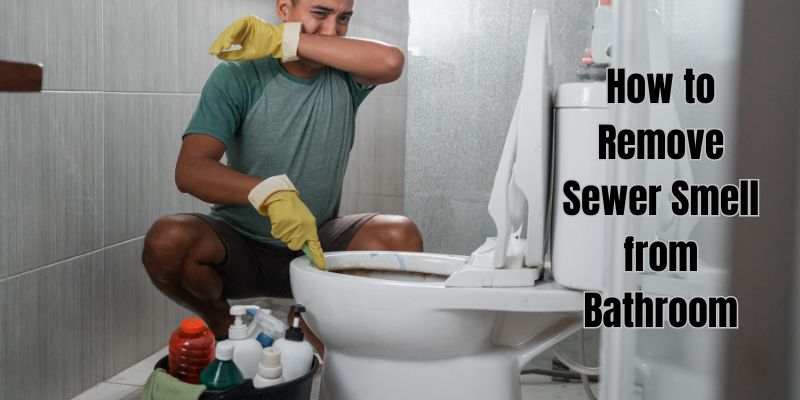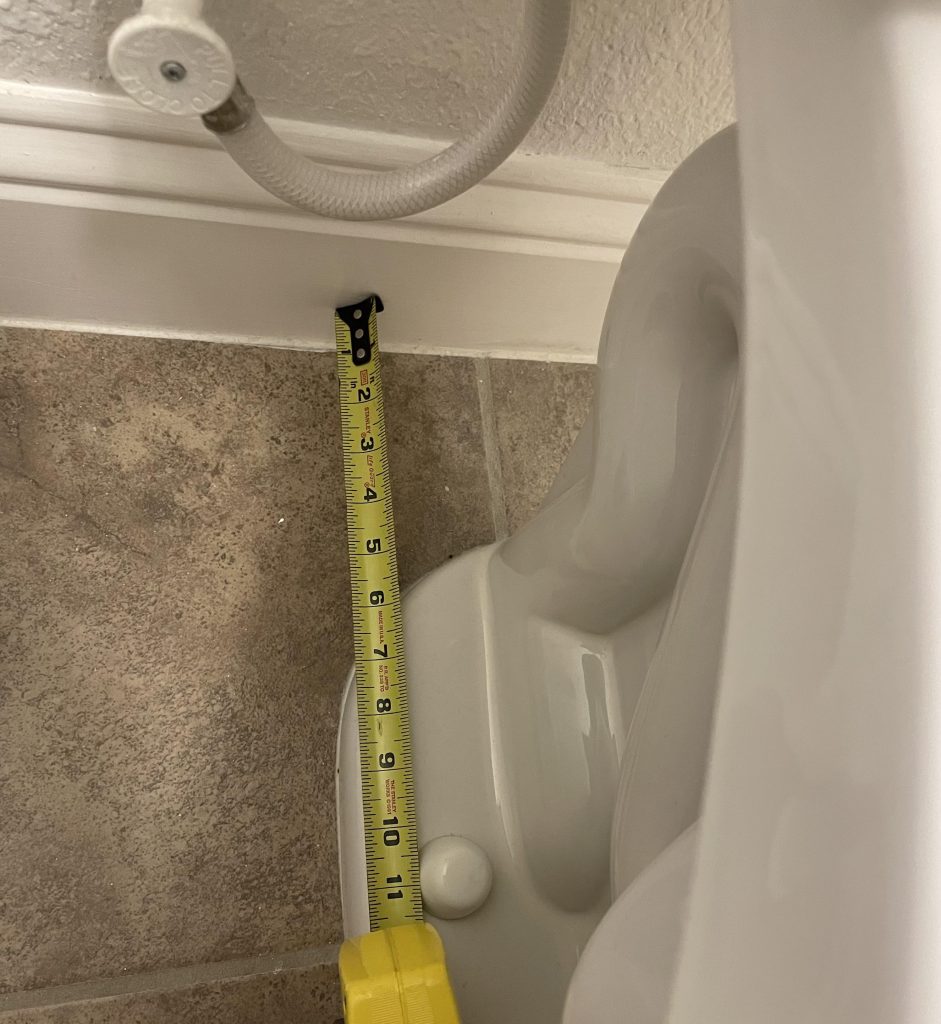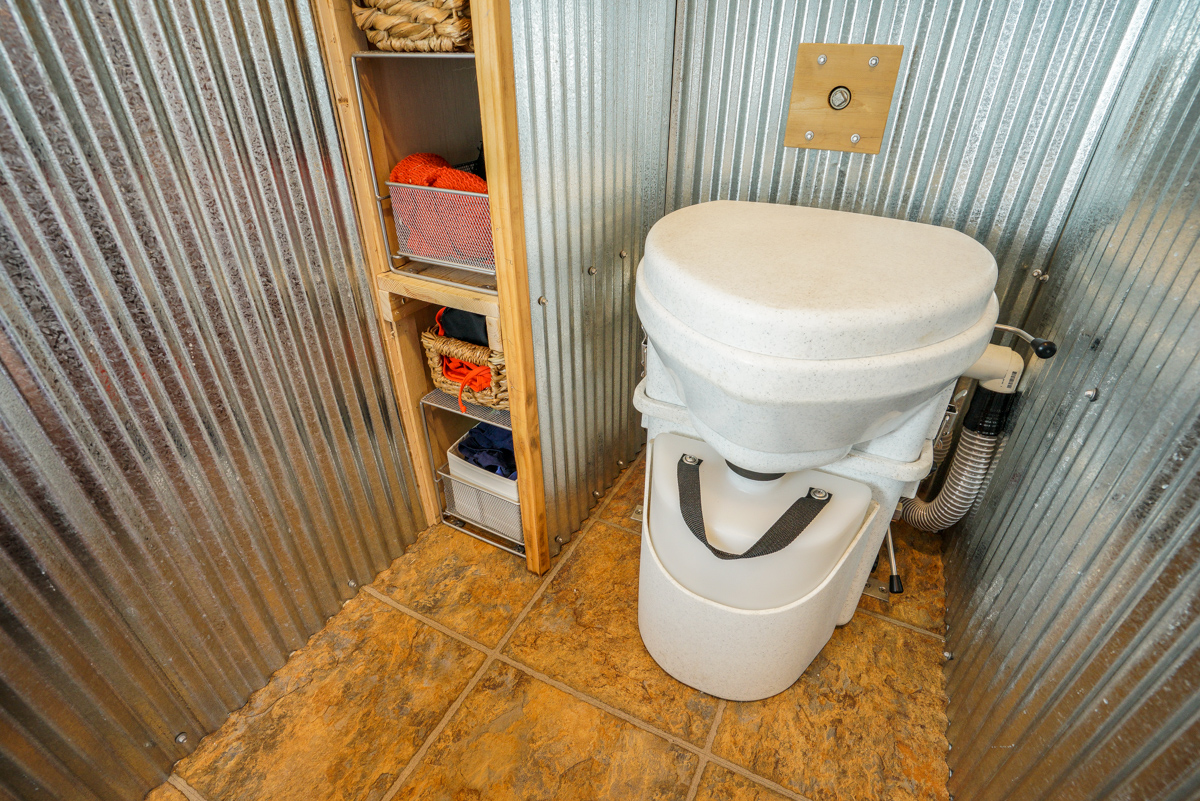Disclosure: This post contains affiliate links and I will be compensated if you make a purchase after clicking through my links. Learn More
To remove sewer smell from a bathroom, clean the drain and check the P-trap for water. Use a mixture of vinegar and baking soda to eliminate odors.
Dealing with a sewer smell in your bathroom can be quite frustrating. It’s essential to address this issue promptly, as it can affect the comfort and hygiene of your home. The odor often stems from problems within the plumbing system, such as dry P-traps or clogged drains.
A quick DIY fix involves pouring a simple solution of vinegar and baking soda down the drain to neutralize the smell. This method not only gets rid of the unpleasant scent but also cleans out any organic material that might be causing the blockage.
Regular maintenance, including thorough cleaning of the pipes and ensuring that traps remain filled with water, can prevent the smell from returning. Keep in mind that severe cases might require professional plumbing assistance to resolve underlying issues effectively.

Common Causes of Sewer Smell
Dry P-trap: This U-shaped pipe under your sink keeps odors out. If it dries out, smells enter your bathroom.
Clogged Drains: Hair, soap, and other debris can clog drains. This leads to bad smells.
Vent Pipe Issues: These pipes prevent sewer gases from entering your home. A blockage can cause smells to seep into your bathroom.
Cracked Sewer Line: This is a serious issue. Cracks in sewer lines allow gases to escape into your home.
Health Risks Associated With Sewer Gas
Sewer gas isn’t just smelly. It poses health risks too. Sewer gas contains methane, ammonia, and hydrogen sulfide. Long-term exposure can be harmful.
| Gas Component | Possible Health Risks |
|---|---|
| Methane | Asphyxiation in high concentrations |
| Ammonia | Eye irritation, coughing, sore throat |
| Hydrogen Sulfide | Headaches, dizziness, nausea |
Protect yourself and your family. Identify and fix the source of sewer smell promptly.
Initial Assessment: Identifying the Source
Unpleasant odors in the bathroom can be unsettling. Identifying the source of sewer smells is the first critical step. This initial assessment requires a keen nose and a close look at your bathroom’s fixtures.
Inspecting Drains and Pipes
Begin with the drains. Sniff around the sink, shower, and toilet. Odors often come from blockages or dry traps. A flashlight can help you spot any unusual signs within the pipes. Look for these:
- Gunk buildup
- Unusual drain colors
- Cracks or signs of damage
Run water to check for proper drainage. Slow drains might need cleaning or further inspection.
Checking for Visible Leaks
Leaks can also cause smells. Check all visible pipes for signs of moisture. Pay attention to the base of the toilet and under the sink. Look for these clues:
| Location | Signs of Leaks |
|---|---|
| Toilet base | Water on floor, staining |
| Under sink | Dampness, water marks |
Seal any gaps and repair leaks promptly to prevent odors.
Quick Fixes: Immediate Action to Reduce Odor
Dealing with a sewer smell in the bathroom is unpleasant. Quick fixes can reduce odor fast. Here are some immediate actions to help.
Running Water to Refill P-Traps
P-Traps prevent sewer gases from entering the home. They may dry out. Run water in all drains regularly. This refills the traps. It’s a simple yet effective step.
Natural Ventilation Techniques
Proper airflow eliminates bad smells. Open windows and doors. Use exhaust fans. This removes the odor quickly. Natural airflow also prevents future smells.
Deep Cleaning Strategies: Tackling Grime and Buildup
Eliminating sewer smell demands a thorough approach. Over time, bathrooms develop grimy buildup. This can trap odors. A detailed clean can tackle these unwelcome smells. Here are effective strategies for a fresh bathroom.
DIY Drain Cleaning Solutions
Baking soda and vinegar prove powerful against grime. Follow these steps:
- Pour 1 cup of baking soda down the drain.
- Follow with 1 cup of white vinegar.
- Wait for the fizzing reaction to subside.
- After 15 minutes, flush with boiling water.
This natural combination breaks down organic matter. It clears out odor-causing clogs.
Effective Use of Chemical Cleaners
When DIY methods fall short, turn to chemical cleaners. Use them responsibly:
- Choose eco-friendly options when possible.
- Follow the instructions carefully.
- Ensure the bathroom is well-ventilated.
- Wear protective gloves for safety.
Chemical cleaners dissolve stubborn buildup. They can swiftly remove lingering smells.
Regular maintenance keeps bathrooms fresh. Combine these strategies for the best results. Your nose will thank you!
Seal the Deal: Repair and Maintenance
Bad odors from bathrooms can be troubling. Proper seal repair and maintenance can help. Let’s explore how to keep your bathroom smelling fresh.
Replacing Worn Out Seals
Toilet seals prevent sewer gases from entering your home. Over time, these seals can degrade. This results in unpleasant odors.
Identify aging seals around toilets and under sinks. Check for signs of moisture or damage.
Replacing seals is a straightforward task. You need a few tools and new seals from a hardware store.
Steps to Replace Seals:
- Turn off the water supply.
- Remove the toilet or sink.
- Clean the area thoroughly.
- Apply the new seal.
- Reinstall the fixture.
- Test for leaks.
Professional help is available if needed.
Regular Maintenance Schedules
Regular maintenance prevents sewer smell. It ensures everything works properly.
- Check pipes, drains, and vents regularly. Look for clogs or damage.
- Use enzymatic cleaners for drains. They break down organic matter without harsh chemicals.
- Flush drains with hot water weekly.
- Inspect seal integrity every six months.
- Schedule professional inspections annually.
Keep a record of maintenance tasks. Note the dates of inspections and cleanings.
Proper care keeps bathroom odors away. Your nose will thank you!
Upgrade Your Tools and Supplies
Let’s talk about upgrading your tools and supplies for a fresh bathroom. You need the right tools and supplies. This will help you remove that sewer smell quickly and safely.
Essential Plumbing Tools
Start with these tools to tackle plumbing issues:
- Plunger: Clears toilet and drain clogs.
- Pipe Wrench: Helps tighten and loosen plumbing fittings.
- Adjustable Wrench: For smaller nuts and bolts.
- Hand Auger: A manual drain snake to clear deep clogs.
These tools will make fixing leaks and clogs easier.
Eco-Friendly Cleaning Agents
Next, use these agents to clean without harming the environment:
- Baking Soda and Vinegar: Natural cleaners that deodorize drains.
- Lemon Juice: Breaks down grease and leaves a fresh scent.
- Enzyme Cleaners: Eat away at organic matter in pipes.
These agents are safe for pipes and the planet.
Professional Help: When to Call the Experts
Professional help can be a game-changer. Sewer smell in your bathroom is not just unpleasant. It can signal bigger issues. Sometimes, DIY fixes don’t cut it. It’s then time to call in the pros. Here’s how to know when to seek help.
Signs You Need a Plumber
- Lingering smell: The stink stays even after cleaning.
- Slow drains: Water takes forever to go down.
- Gurgling sounds: Your drains sound like they’re talking.
- Water backup: Water comes up instead of going down.
These signs mean trouble. They tell you it’s time for expert help.
Preventive Measures: Keeping the Bathroom Fresh
No one enjoys a smelly bathroom. Taking preventive steps ensures a fresh-smelling space. Let’s dive into daily habits and innovative products that help.
Daily Habits to Prevent Odor
- Flush regularly to keep odors at bay.
- Ventilate after showers to reduce moisture.
- Use baking soda in drains weekly.
- Clean toilets with vinegar and water mix.
- Keep toilet lids closed to trap odors.
- Dry bath mats and towels outside, if possible.
- Empty trash bins to remove odor sources.
Related: How Unclog a Toilet Fast
Innovative Bathroom Products
| Product Type | Function | Benefit |
|---|---|---|
| Odor-Sealing Trash Cans | Seal in waste smells | Keeps air fresh |
| Automatic Air Fresheners | Release scent periodically | Maintain constant freshness |
| Drain Protectors | Prevent clogs | Stop bad smells from forming |
| Moisture Absorbers | Control humidity | Prevent mold and mildew |
Choose products that suit your bathroom needs. Freshness is within reach!
The Smell Test: Ensuring Success
Ensuring success in removing sewer smell from your bathroom is key. Once you’ve cleaned and fixed potential sources, it’s crucial to confirm the smell is gone. A bathroom should offer a fresh and clean atmosphere, not a reminder of the sewers below.
Monitoring for Recurrence
Keep your nose on high alert after the initial clean-up. Sniff around the bathroom regularly, especially near drains and toilets. Check these areas after heavy use, as increased water flow can stir up any lingering odors. Log your findings to track any patterns.
- Check daily for at least a week.
- Inspect after showers, baths, and flushes.
- Note any smell’s intensity and location.
Final Touches for a Fresher Bathroom
Add finishing touches to maintain a fresh-smelling bathroom. Use natural deodorizers like baking soda or essential oils. Place these near problem areas for continuous freshness.
| Item | Location | Frequency |
|---|---|---|
| Baking Soda | Near drains | Weekly |
| Essential Oils | On counters | As needed |
Regularly clean fabrics like shower curtains and towels. These can trap odors. Wash them in hot water with vinegar for extra odor elimination. Keep the bathroom well-ventilated. Use fans or open windows to help remove any trace smells.
Remember: A clean, fresh bathroom is a happy bathroom. Your efforts will ensure a pleasant and welcoming space for all.
Frequently Asked Questions
How Do I Get Rid Of Sewer Smell In The Bathroom?
Check for clogs in your drain and use a mixture of vinegar and baking soda to eliminate the odor. Ensure proper ventilation and consider installing a new P-trap if necessary. Regular cleaning and maintenance also prevent sewer smells.
What Neutralizes The Smell Of Sewage?
Baking soda, vinegar, and boiling water can effectively neutralize sewage odors. Use them separately or in combination for best results.
Why Does My Bathroom Smell Like Sewer But No Leak?
Your bathroom might smell like sewer due to dry P-traps, clogged vents, or biofilm buildup in drains. Regular cleaning and water flow can prevent these odors.
How Do You Get Rid Of Drain Smell In Bathroom?
Pour baking soda followed by white vinegar down the drain, wait 10 minutes, then flush with hot water to eliminate bathroom drain odor. Regular cleaning prevents smells from returning.
Final Words
How to remove sewer smell from bathroom is simpler than you might think. Follow the steps outlined, and you’ll enjoy a fresh, welcoming space in no time. Remember, regular maintenance is key to keeping those unpleasant smells at bay. Ready to breathe easy?
Start today, and say goodbye to sewer smell for good. For more home maintenance tips, question to our plumbing forum and stay updated!


